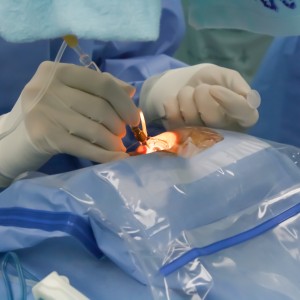 According to a recent study published in the American Journal of Ophthalmology, anterior capsule tears during cataract surgery may need additional surgical procedures, leading to intraoperative complications and permanent vision loss.
According to a recent study published in the American Journal of Ophthalmology, anterior capsule tears during cataract surgery may need additional surgical procedures, leading to intraoperative complications and permanent vision loss.
In their retrospective interventional controlled case series study titled “Complications and Outcomes of Phacoemulsification Cataract Surgery Complicated by Anterior Capsule Tear,” Gianluca Carifi and colleagues at Moorfields Eye Hospital in London examined the outcomes of phacoemulsification cataract surgery as a result of anterior capsule tears in 239 eyes (study group) and a control group that included 212 eyes.
All procedures were conducted at the Moorfields Eye Hospital and clinicians recorded information involving intraoperative, biometric and postoperative details. Patients with a history of combined surgical procedures, intraocular surgery or eye trauma and planned manual extracapsular cataract extraction were excluded. The primary outcomes were the rates of intraoperative capsule complications, visual and refractive outcomes.
Using univariate statistical procedures to compare the groups, the researchers observed that in the study group, a previous planned phacoemulsification was changed during manual extraction in 2% of the eyes (n=5); the detected rate of tear extension to the posterior capsule was 24%, with a vitreous loss in 15.9% of eyes and lens material drop in 4.6% of eyes. A total of 11% of eyes needed a secondary unplanned surgical procedure.
The results showed that in all cases, the refractive results were poor (a total of 22.4% of eyes), with postoperative refraction ≥1 diopter of target. However, the researchers found a visual improvement in 71% of patients in both study groups, and a permanent visual loss in 1.7% of patients.
Researchers concluded that anterior capsule tear is related to more intraoperative complications, with a reasonably high frequency of secondary interventions. They observed worse refractive outcomes and a risk of permanent visual loss particularly if the lens was implanted out of the bag. As such, the authors recommend implanting a single-piece IOL in the capsular bag vs. a multi-piece IOL to achieve a final refraction close to the target.


